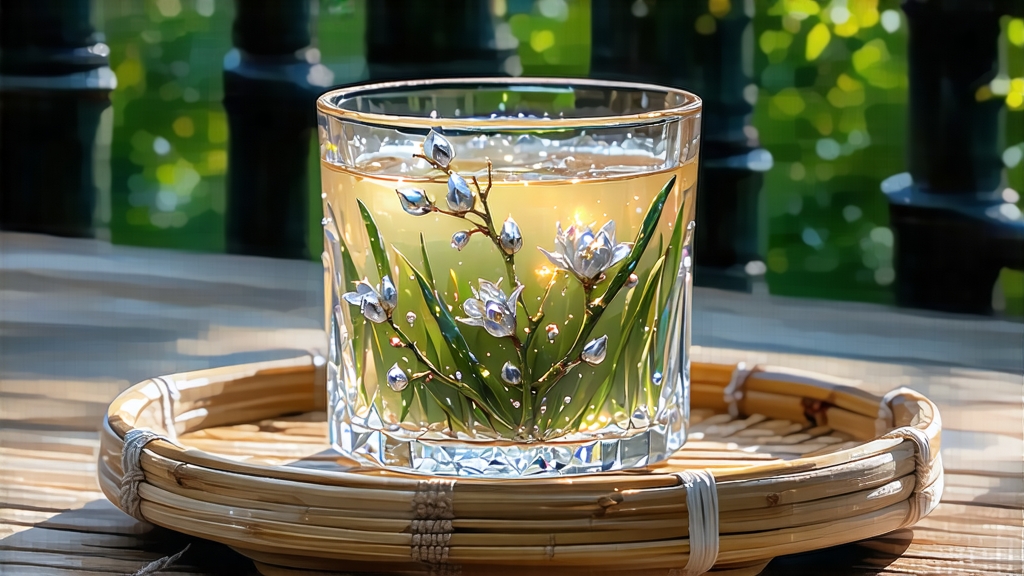
Among the six major classes of Chinese tea, white tea is the least theatrical yet the most elusive; it is oxidised by air, not fire, and its masterpiece is Bai Hao Yin Zhen, “Silver Needle.” To the uninitiated it looks like a pile of pale twigs, but in the cup it releases the aroma of fresh rain on hay, the flavour of mountain springs, and a lingering honeyed note that arrives only after the liquor has disappeared. Understanding this tea is a lesson in restraint: the farmer must do almost nothing, the drinker must wait, and both are rewarded with a liquor that seems to capture moonlight itself.
History: from imperial tribute to global cult
The first written record of “white tea” appears in the Song dynasty treatise Da Guan Cha Lun (1107), yet the tribute cakes sent to Emperor Huizong were made from tender leaves, not the pure buds that define Yin Zhen. The bud-only style emerged in Fuding county during the late Ming, when growers discovered that the local Da Bai Hao cultivar—whose downy shoots can reach three centimetres—could be air-dried without rolling or pan-firing. By the Qing, Silver Needle was shipped down the Min River to Canton, then across the South China Sea to Java and London, where Victorian merchants marvelled at its “peach-like bloom.” After 1949 the tea became a state gift; in 1972 Premier Zhou Enlai served it to President Nixon, sealing its diplomatic prestige. Today tiny lots of pre-Qingming Yin Zhen sell at auction for more than gold by weight, while specialty cafés from Melbourne to Oslo race to secure the spring harvest.
Terroir: why Fuding tastes like Fuding
Chinese law allows only three counties—Fuding, Zhenghe and Jianyang—to label their bud-white tea Bai Hao Yin Zhen. Of these, Fuding’s coastal hills enjoy red lateritic soil, 1 600 mm annual rainfall and a blanket of morning fog that slows transpiration, allowing the buds to synthesise more amino acids. The result is a sweeter, more fragrant cup than the inland equivalents. Within Fuding, the villages of Taimu Shan, Guan Yang and Dian Tou have become micro-appellations; Taimu Shan buds carry a hint of alpine pine, whereas Guan Yang liquor is creamier, almost like blanched almonds. Elevation matters: gardens at 600–800 m pick ten days later than valley plots, but the extra chill concentrates the protective trichomes that give the tea its silvery sheen.
Cultivar: the genetics of velvet
The official standard stipulates Camellia sinensis var. sinensis cv. Da Bai Hao or the clonal selection Fu Ding Da Bai. Both produce oversized buds whose outer scale is already pubescent at dormancy; under electron microscopy each hair is a single cell filled with terpenes that volatilise during withering to create the tea’s signature “milk-sweet” aroma. Growers prune the bushes into arc-shaped canopies that encourage lateral buds; a well-managed bush can yield 150 kg of fresh buds per mu, yet only 18 kg of finished tea after moisture loss.
Craft: the art of doing almost nothing
Picking begins when the morning dew still weighs more than the bud itself; any pressure bruises the cell walls, inviting premature oxidation. The standard is “one bud, no leaf, no nail,” meaning the pluck must detach cleanly above the scale, leaving the tiny fishtail leaf behind. From field to factory the buds ride in bamboo baskets lined with gauze, never more than 3 cm deep.
Withering is the only transformative step. Traditionally the buds are laid on water-woven bamboo trays stacked like shelves in a sun-lit corridor. For the first six hours they bask in gentle winter sun (≤28 °C), then they are moved indoors where moisture evaporates slowly through the night. Master witherers “read the sky”: if the afternoon humidity spikes, charcoal fires underneath the raised floor add invisible warmth, never smoke. Total withering lasts 48–72 h until moisture drops to 8–10 %. No rolling, no baking, no shaping—the buds curl naturally into tiny quills reminiscent of fishhooks.
Modern factories replicate the climate in stainless-steel tunnels with dehumidifiers, yet the finest lots are still withered the old way because bamboo breathes,